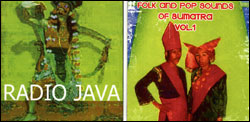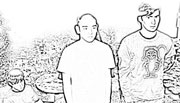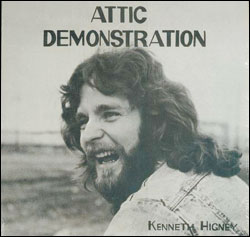A great compilation makes sense of a world that rarely does. Whether it was made for you personally on a Maxell C90, burned onto a CD-R, or manufactured and pressed as a ready-made object, a great mix usually has two requirements: It should make connections you’d never considered before, and it should contain songs you’ve never heard but wonder how you ever lived without. A great mix can intuitively codify an entire era (Saturday Night Fever), genre (Not So Quiet on the Western Front, No New York, Clicks + Cuts), or artist (ChangesOneBowie). It can open your palate to music you might have previously dismissed or just never explored (Ethiopiques, Killed by Death!).
The Anthology of American Folk Music, a 1952 Folkways compilation released on the then-new LP format, remains the Rosetta Stone of compilation albumsto the point of becoming a music-critic clich鮠Assembled with an acknowledged intention to foment social change by Seattle-raised Harry Smith, a mystically inclined record collector, filmmaker, ethnologist, and visual artist, the Anthology‘s three double-LPs marked a radical shift from earlier prurient, segregated, and often hokey approaches to collecting folk songs. Idiosyncratically collected as “Social Music,” “Ballads,” and “Songs,” with discussion of each track in a booklet, it was an unerring sampler of raw hillbilly singing, gospel, proto-country, deep blues, murder ballads, and Cajun dance music.
Whole patterns of collecting changed in the wake of the Anthology. Labels sprung up to satisfy those who wanted to hear more music by the likes of Bascam Lamar Lunsford and Bukka White, and dozens of the artists on the set had revived careers in the ’50s and ’60s. But few labels’ compilations have matched the enthused vision that Smith, a self-described “ethnopharmacologist,” imposed on the Anthology. (A notable exception is late guitarist and musicologist John Fahey’s Revenant records, which not coincidentally issued the “lost” fourth volume of the Anthology in 2000.)
THAT’S CHANGING, though, thanks to two new labelsone in Atlanta, the other in Seattlethat are picking up Smith’s most neglected legacy: releasing artful, subjective, and wondrously selected and sequenced mixes that ripple with energy and an undiluted desire to turn people on to neglected and unheard sounds.
Five years ago, 27-year-old Lance Ledbetter, of Atlanta’s Dust-to-Digital, had a college radio show called Raw Musics (Revenant’s then-tag line), when he read “Desperate Man Blues,” Eddie Dean’s profile of 78-rpm collector Joe Bussard, in the Washington City Paper. “I looked up his address and wrote him a letter,” Ledbetter says of Bussard. “Soon, we were corresponding, and he made tapes for me of all this amazing gospel music from the turn of the century through to the ’50s, in exchange for me paying him 50 cents per song. I started to wonder why no one else was releasing this stuff.” Inspired by the 1997 CD reissue of the Anthology, Ledbetter set out to create an elaborate love letter to gospel music. The result, Goodbye Babylon, Dust-to-Digital’s first release, is one of the most breathtaking compilations you’ve ever heard or seen.
What we today call gospel music is a 20th-century invention, a musical form that draws on hymns and spirituals centuries old but which itself is younger than even jazz and the blues. People have been creating spiritual music since they first opened their mouths, and if one thing is clear from this set, it’s that evangelical music made by Christians at the turn of the century is crazy diverse. Each disc of Goodbye Babylon has a loose theme “Salvation,” “Judgment,” “Deliverance Will Come,” etc. But the selections range so widely (heavy blues, lilting country duets, bizarre choral music, field hollers, an entire CD of raw preachingrecorded sermons were best sellers before radio became widespreadeven a calypso track), it’s impossible to get bored by it. Even if you’re already familiar with the most famous artists (Mahalia Jackson, the Carter Family, the Louvin Brothers), there are enough rarities, many appearing on CD for the first time, to whet the appetite of even the most hard-core collector. Rev. T.T. Rose and Singers’ title song, for instance, comes from a recently discovered 1930 test pressing. And the audio restoration by Boulder-based Airshow Mastering is nearly hissless; songs I’ve listened to dozens of times before by Blind Willie Johnson and Washington Phillips sound outrageously good here.
Babylon doesn’t come cheapit retails for $100 but, in this case, the packaging is worth it. Designed by Susan Archie (who won a Grammy for her work on Revenant’s Charley Patton box set), Babylon‘s six discs are encased in a beautiful, hand-silk-screened pine box, surrounded by raw cotton and a book’s worth of liner notes, designed like an old hymnal.
“MUSIC THOUGHT NOT to exist is everywhere,” goes the motto of Seattle’s new Sublime Frequencies label, run by the Sun City Girls’ Alan and Rick Bishop with their friend Hisham Mayet. Where Babylon redresses historical wrongs done to gospel (which gets the shortest shrift of any American musical form), Sublime Frequencies’ three CDs and two DVDs have such a radically time/space-defying quality, they seem to come from a land where Sun Ra and the Ethiopiques series of psychedelic ’70s Ethiopian funk are purely for the cocktail houressentially, the Nonesuch Explorer label on acid. “We are covering areas where most ethnomusicologists don’t go,” explains Alan Bishop. “Many of them are not interested in pop or folk hybrid music.”
Happily, Bishop is. Folk and Pop Sounds of Sumatra Vol. 1 was culled from commercially released cassettes from the Indonesian island. Bishop describes the sounds as “droning beat pop, pseudo-gypsy songs, and jungle folk trance”I can’t do better than that. Night Recordings From Bali is a selection of field recordings that’s as much musique concr败 as it is documentation: Packs of barking dogs and the blare of a motel television set are paired with the clangs of metal gong gamelannot the traditional, lovely Balinese form, but something more thrashcore. (At times, it sounds like it was conducted by members of Japanese noise- rockers Ruins.) Best of all is Radio Java, a fast-paced audio collage snapshot of music taped directly off the radio in Java on which rock and electronic sounds buck against timeless rhythms and melodies in mind-bending patterns. (Five more discs, including Radio Morocco, Radio Palestine, and Princess Nicotine: Folk and Pop Music of Myanmar, which compiles sounds from the country that was formerly known as Burma, will be released in February.)
Bishop refers to phenomenologist Charles Fort’s coinage “extrageography” to describe the Sublime Frequencies M.O. “[It’s] a term Fort used to describe phenomenon outside of the accepted dimensions and perceptions of science and the common man,” he explains. “I use it as a generic place name to describe cultural areaswhich have vibrant folklore and musicthat are beyond the will of most to entertain as ‘valid’ points of reference to study or merely want to learn about. For example, Niger, Benin, Oman, and Nagaland are extrageography because most people don’t know anything about them, yet I could argue that people in those four areas of the world are as valid and perhaps superior to others when it comes to creating music of expressive beauty.”
The DVDs, which will be familiar to those who’ve attended the Sun City Girls’ infrequent film presentations at the Rendezvous, are loosely in the same vein as Shanachie’s justly celebrated Beats of the Heart video series. But the shooting style is highly untraditional, the camera occasionally focusing on strikingly beautiful people in the audience, or leaving the performers to concentrate on a group of young kids playing on the fringes of the scene. The Nat Pwe: Burma’s Carnival of Spirit Soul DVD captures rarely documented ceremonies held in Myanmar, while Hisham Mayet filmed the Moroccan DVD, Jemaa El Fna: Morocco’s Rendezvous of the Dead, basically editing the thing as he shot it, and it’s a spectacular look at street performers in Marrakech’s massive central square.
The DVDs contain no narration and very little background information, leaving it to the consumer to figure stuff out. “A narrator is a distraction,” says Bishop. “There is always an agenda, which ‘guides’ the viewer. The best parts of all ethnographic filmHerdsmen of the Sun by Werner Herzog and Divine Horsemen by Maya Deren being two of the bestare the moments without narration. I’m not an idiot. I can figure out what’s going on most of the time. Many other people are not idiots. They can make up their own mind about how to interpret non-narrated film. Why not completely superimpose yourself into [another] world without some schmuckeven if it’s some well- intentioned schmucktelling you what’s going on?”








